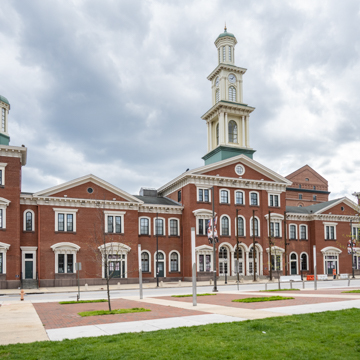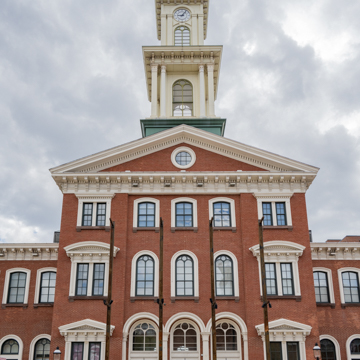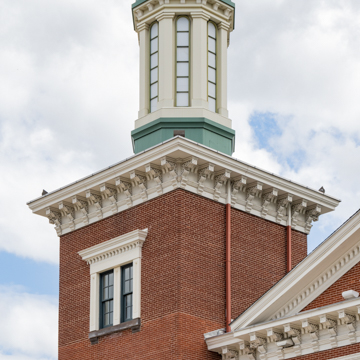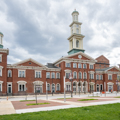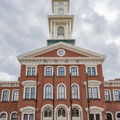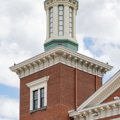This imposing building, a full block in length, was designed by Niernsee and Neilson and overseen by B&O supervising architect Joseph Kemp. It replaced the B&O’s Mount Clare Station as the company’s principal terminal, relocating closer to downtown and the Inner Harbor while also creating offices for the company’s executive staff. Intended to rival the great passenger train stations of London, Camden Station is a richly ornamented Italianate building featuring a gable-front central section with a grand tower with astronomical clock and wings surmounted by cupolas. Elaborate cast-iron window pediments and traceries, fluted columns, and entrance loggia were produced by the local Hayward and Bartlett Company.
The Italianate style had newly emerged on the Baltimore architectural scene and was one in which Niernsee and Neilson were early proponents. Its exuberant design and expansive footprint reflect the success of the B&O, then expanding its operations. The main block was completed first, with the planned 180-foot central tower and wings following. The station was purchased by the Maryland Stadium Authority for the construction of Oriole Park (BC79) after passenger service was discontinued in 1986 and restored.


